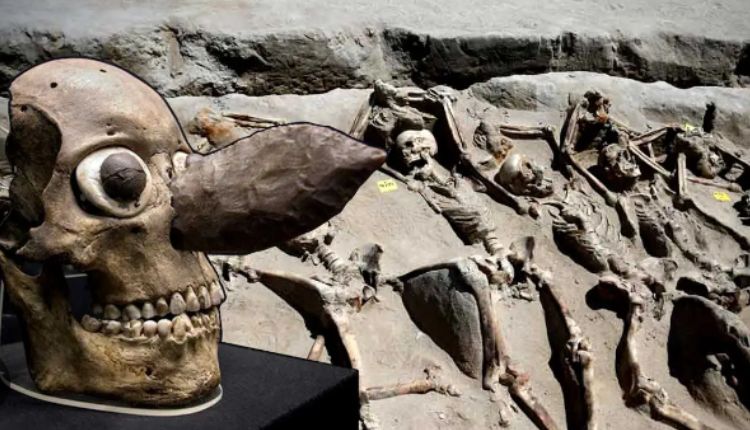Archaeology is a fascinating field that uncovers some of history’s most intriguing discoveries. It can also be quite a rewarding career path for those who are interested in pursuing it.
Several websites feature daily archaeological news and articles that focus on different ancient sites and archaeological mysteries. Some even feature interviews with renowned archaeologists.
Mummy Portraits
When they were discovered in the 1880s, painted portraits of mummies (also called Fayum portraits) blew historians’ minds. They were a new and exciting type of funerary art that showcased the fusion of Egyptian and Greco-Roman artistic traditions. They are considered precursors to the Western painting tradition, but they remain shrouded in mystery.
What’s known is that they were affixed to the inside of the archaeology news coffins, and that they were made from a variety of woods—locally grown (like sycamore, cypress, or pine) and possibly imported (such as cedar). The portraits were life-sized and featured the deceased wearing their hairstyles from when they were alive. Some mummies also had wooden tags attached to them, inscribed with names and other information about the person.
Most of the portraits depict young people, reflecting low life expectancies at the time. The paintings were probably completed while a person was still alive, and the artist’s goal was to capture them at their peak. This is supported by CT scans of mummies that show their ages generally correspond to the age of their corresponding portraits, says a researcher at the Block Museum at Northwestern University.
The paintings also appear to show a bit of style preference from the painter. Some were done in encaustic, a translucent wax-based paint that allows for shading and variations of color. Others were painted in tempera, a technique that relies on paint with high pigment saturation. The painters accentuated features like eyes and lips in an attempt to convey the sense of a person who was just a breath away from life.
Whether or not they were painted during a person’s lifetime, the mummy portraits are an important tool for interpreting Egypt’s cultural legacy. They tell us much about how people lived, who they were, and how funerary practices changed over time.
For the first time, a team of conservators has examined two mummy portraits in detail to answer these questions and more. Their findings are published in the journal PLoS ONE. The mummy portraits were donated to the Art Institute of Chicago by a private collector in 2013. In addition to shedding light on their painterly techniques, the researchers’ examination has revealed a wealth of new clues about how these works found their way from burial grounds into museums.
31,000-Year-Old Leg
Researchers discovered a 31,000-year-old skeleton missing the lower leg and foot in a cave in Indonesia that may represent the oldest known evidence of surgery. It appears the person underwent the procedure as a child and went on to live for several years, challenging the idea that prehistoric humans weren’t making medical advancements. The discovery, reported in Wednesday’s issue of Nature, was made by an expedition team led by Australian and Indonesian archaeologists who were excavating a limestone cave in East Kalimantan, in the Indonesian province of Borneo, looking for prehistoric rock art.
The skeleton of the person who underwent the surgery, which the team didn’t identify, was found to be missing part of the left leg and foot. The leg bones also showed signs of healing, which the team says is consistent with a surgical amputation. The team ruled out other possibilities, including a traumatic accident or animal attack, because the bones did not show the kind of bone fractures and healing typical of those kinds of events.
“This is the earliest proof of surgery and it’s also the youngest surgery we know of,” said lead researcher Tim Maloney, of Griffith University in Southport, Australia. The previous earliest-known instance of an amputation was a 7,000-year-old skeleton of a Stone Age French farmer who had his left forearm severed just above the elbow. The amputation in Borneo was likely done by someone with advanced skills and detailed knowledge of the human limb and muscular and vascular systems, the team says.
The amputation happened around the time that hunter-gatherers were moving into more permanent settlements, according to the team. They had to learn how to irrigate and farm, and the success of this amputation suggests that some people already had a good grasp of medicine by this point.
The team has discovered other interesting things at the site, which is thought to have been a burial ground for local people. They found a main mound that is lined with passages and believed to have been used as a solar calendar. They also found two smaller mounds, one of which is thought to have been a medicine or food storehouse. And they spotted a glass bead that had travelled thousands of miles to the grave from Mesopotamia.
Ancient Poop
The discovery of a pile of ancient fecal matter might not inspire the same initial excitement as a shiny artifact, but preserved poop can reveal much about the diets and living conditions of past societies. That’s why researchers have increasingly turned to poop in their archaeological pursuits.
To study these dried, mineralized bits of excrement—known as coprolites—scientists extract their DNA and look for clues about the human digestive system. For one, a specific type of fungus is known to ferment food, leaving behind a unique chemical signature in the resulting dung. So when a team of scientists in Oregon found several 14,000-year-old pieces of this poop, they suspected that it was human.
Using an electron microscope, they bored into the coprolite and spotted viruslike structures peppered throughout. These were bacteriophages, which are basically cargo ships in the bacterial world that ferry genetic information from one bacterium to another. Sometimes this transfers genes that help bacteria resist antibiotics, giving them an evolutionary advantage.
When the phages in the ancient poop sample were sequenced, they revealed that most of them belonged to a group called “Treponema,” a spirochete bacterium that’s associated with gum disease and sexually transmitted infections. What surprised the team was that industrial-type modern humans have zero Treponema, while nonindustrial ones are awash in it.
As for what ancient Britons were eating, new research suggests that they favored offal (the internal organs of cattle). This was a common meal for hunter-gatherers, but in addition to the heart, liver, and tongue—typically found in offal—these particular fecal samples included the eggs of parasitic tapeworms.
The discovery of these worms in ancient poop from a prehistoric settlement near Stonehenge sheds light on the health and diet of the people who built that famous monument, reports CNN. The poop, unearthed at a village known as Durrington Walls, dates back to about 2,500 BC, around the time that archeologists believe much of the stone circle was constructed. The team speculates that these parasites are what allowed the ancient Britons to eat offal, since it would have helped them digest it more efficiently.
Biblical Archaeology
The biblical archaeology field focuses on sites and artifacts related to Judaism and Christianity. The Bible tells of a number of different people and places, and biblical archaeology helps to put these stories into their historical contexts.
As interest in biblical history picked up steam during the 19th century, many foundations were formed to promote this type of study. The British Palestine Exploration Fund was a major leader in this area, with digs conducted by archaeologists (serious and hobbyist) from all over the world. This was also the era when the future Lawrence of Arabia began his archaeological career at Carchemish with Leonard Woolley.
This type of research has to be carefully weighed and interpreted. The most important discoveries may not be the ones that prove certain theological points, but those that expand our understanding of what was happening during biblical times. One example of this was the unearthing of a first-century ossuary (bone box) in Jerusalem that contained the skeleton of a man who had been crucified. This discovery was named the number one archaeological find related to the New Testament.
Other examples of discoveries that have had an impact on biblical study include the discovery of a first-century mosaic inscription at a site called El-Araj, which is located near the Sea of Galilee. The researchers from the Kinneret Institute for Galilee Archaeology and Nyack College believe that this inscription refers to the Apostle Peter.
These types of finds help to give credibility to biblical stories that otherwise might seem impossible. They also serve to show that there is a basis for faith in a God who is real and who interacts with humans in historic situations.
For those interested in learning more about the archaeological field that relates to Biblical study, the Cooley Center offers a variety of resources. The publication Bible Review, for instance, opens the realm of Biblical scholarship to a non-academic audience. This seminal magazine features articles from well-known scholars, detailed archaeological research and stunning art that brings to life the Bible’s worlds for readers. It’s a must-read for anyone interested in these topics.
Conclusion
Archaeology continues to be a fascinating field of study, unraveling the mysteries of our past and providing insights into human history and cultural development. With advancements in technology and new excavation sites, the discipline constantly evolves, uncovering previously unknown civilizations and shedding light on ancient practices, leaving us in awe of our shared heritage.
FAQs:
1. What is archaeology? Archaeology is a scientific discipline that studies human history through the excavation, analysis, and interpretation of material remains, artifacts, and structures from past civilizations. It helps us understand the development of human societies, cultures, and technologies, providing crucial insights into our shared past.
2. How do archaeologists determine the age of artifacts and sites? Archaeologists use various dating methods to determine the age of artifacts and archaeological sites. Carbon dating, which analyzes the decay of radioactive carbon isotopes, is one commonly used technique for organic materials. Other methods include dendrochronology (tree-ring dating) and stratigraphy (examining the layers of soil and artifacts to establish relative chronology).

